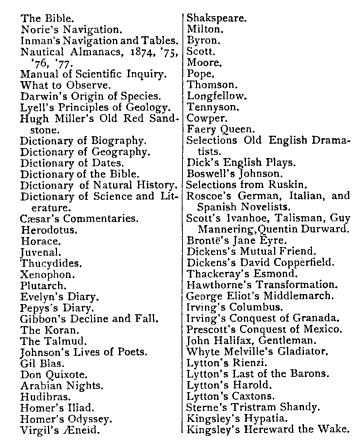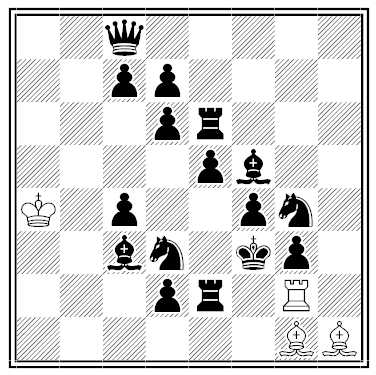One Gloomy Evening
A schoolmaster gave a Latin grammar to the 10-year-old Winston Churchill and directed him to learn a series of words.
Churchill found it an “absolute rigmarole” but memorized the list and reeled it off when asked.
‘But,’ I repeated, ‘what does it mean?’
‘Mensa means a table,’ he answered.
‘Then why does mensa also mean O table,’ I enquired, ‘and what does O table mean?’
‘Mensa, O table, is the vocative case,’ he replied.
‘But why O table?’ I persisted in genuine curiosity.
‘O table,–you would use that in addressing a table, in invoking a table.’ And then seeing he was not carrying me with him, ‘You would use it in speaking to a table.’
‘But I never do!’ I blurted out in honest amazement.
“Such was my introduction,” he later wrote, “to the classics from which, I have been told, many of our cleverest men have derived so much solace and profit.”
Medium Message

“The fact remains that the four greatest novelists the world has ever known, Balzac, Dickens, Tolstoi and Dostoievsky, wrote their respective languages very indifferently. It proves that if you can tell stories, create character, devise incidents, and if you have sincerity and passion, it doesn’t matter a damn how you write.” — Somerset Maugham
The Corkscrew

CMU’s Kilroy
Just as Georgia Tech has George P. Burdell, Carnegie Mellon has Harry Q. Bovik, an invisible but dedicated student/researcher/ghost/mascot whose long tenure at the institution has produced an impressive list of achievements.
According to his personal page, Bovik has served as a science consultant to the Weekly World News, a White House fellow, and a project scientist at the Millenium Falcon Engineering Company.
Currently he’s a senior computer scientist at CMU, where his office is famously hard to find, and his work has inspired an annual conference.
Happily, he’s also kept up with the times: He has a LinkedIn profile and a Facebook page.
Campfire Reading
In 1886 the Pall Mall Gazette asked Henry Morton Stanley what books he had taken with him across Africa. He responded:
“I carried a great many — three loads, or about 180 lb. weight; but as my men lessened in numbers, stricken by famine, fighting, and sickness, one by one they were reluctantly thrown away, until finally, when less than 300 miles from the Atlantic, I possessed only the Bible, Shakspeare, Carlyle’s ‘Sartor Resartus,’ Norie’s Navigation, and Nautical Almanac for 1877. Poor Shakspeare was afterwards burned by demand of the foolish people of Zinga. At Bonea Carlyle and Norie and Nautical Almanac were pitched away, and I had only the old Bible left. But the following was my list of books on setting out with a tidy battalion of men:–

“After the march, unless there was any fighting, or observations for position to take, one of these books was sure to be taken up and occupied the afternoon and then evening until 9 P.M., when what with fatigue, reading, and a necessity to be up at 5 A.M., I would soon be asleep. Many of these books are still in Africa, along the line of march, and will be kept as fetishes until some African antiquarian will pick some of them up a century hence, and wonder how on earth ‘Jane Eyre,’ printed in 1870, came to be in Ituru, or Thackeray’s ‘Esmond,’ Dickens and Scott, came to be preserved among the lubari of Gambaragara.”
In a Word
lingible
adj. meant to be licked
A Spoonful of Sugar
For out-and-out politeness commend us to Mr. Justice Graham, who when once presiding at the Old Bailey in the days when the law sent crowds to the gallows, had to sentence no less than sixteen prisoners to death. In reading out their names he inadvertently missed one — John Robins — and then with due solemnity exhorted them to prepare for their doom, and pronounced on each the sentence of death. The condemned left the dock, and his lordship’s attention was called to the fact that he had omitted to read John Robin’s name. ‘Bring him back,’ said the Judge. ‘By all means let John Robins step forward.’ Back came the unfortunate man, and Graham, addressing him in his singularly courteous manner, assured him that ‘the omission was purely accidental, and I ask your pardon for my mistake. I am very sorry, and can only add that you will be hanged with the rest.’
— Law Notes, March 1905
Thin Thinking

Some of the figures (particularly the holy ones) in El Greco paintings seem unnaturally tall and thin. An ophthalmologist surmised that the painter had a defect of vision that caused him to see people this way.
The zoologist Sir Peter Medawar pointed out that we can reject this conjecture on purely logical grounds. What was his insight?
Unquote
“A man cannot be comfortable without his own approval.” — Mark Twain
“A man who finds not satisfaction in himself, seeks for it in vain elsewhere.” — La Rochefoucauld
“Nothing can bring you peace but yourself.” — Emerson

